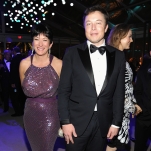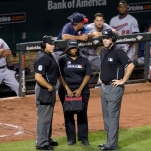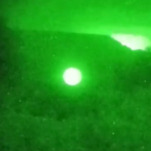Let's look to magicians to better understand technological deception
In order to best understand the new technologies in our lives, it may be more useful to look to stage magicians than to source code.
The science fiction writer Arthur C. Clarke wrote that, “Any sufficiently advanced technology is indistinguishable from magic.” But I’m not saying that the performances of David Copperfield and the products of Steve Jobs are one and the same. What’s important about the example of stage magic is that it will help us think about which technological deceptions should be permissible in society.
We like the deception at the heart of a Penn & Teller show, but we don’t like the idea of being “deceived” if the outcome is a negative one. Take, for example, the Volkswagen scheme to evade emissions regulations. At the heart of the plot was a kind of magician’s trick. The company’s “green” diesel cars had a “defeat device,” software that produced the illusion of a car with stable emissions behavior. Like a trick deck of cards that looks “fair” but is actually rigged to favor the magician, the “defeat device” masked the car’s reality, that it was a computer with four wheels designed to fool environmental regulators.
The Samsung SmartTV is another recent example. While in many respects it looks and behaves like a traditional television, it also has the 1984-style capability to listen in on conversations happening around it. Like Volkswagen’s cars, the TVs rely on the illusion of category—when a device takes the form of something recognizable, but in fact behaves and works quite differently under the hood. The SmartTV is not accurately described as a television at all, but instead a listening device that happens to produce a television-like experience.
When the illusions were revealed, they set off a wave of privacy concerns for Samsung owners, and environmental concerns for Volkswagen drivers, as well as anger from commentators and the public at large who were not happy about the illusions.
Regardless, there are many legitimate reasons for engaging in this sort of deception. Taking the form of a familiar technology often directly improves usability and adoption. Samsung would confuse people if rebranded its television a “two-way entertainment portal.” Because it looks like a TV, behaves like a TV, and is controlled like a TV, users can take advantage of new features without having to relearn much.
Moreover, these deceptions provide a sense of magic and novelty that is often the selling point for consumers. The thermostats produced by Nest, for instance, borrow the form factor of traditional thermostats, but intelligently adjust temperature, monitor energy consumption, warn of burst pipes, and so on. And indeed, it is these “additional” features which are giving Nest a competitive advantage against other traditional home appliance companies.
To that end, deception by machines is a crucial part of the economy around smart devices, the Internet of Things, and “intelligent” assistants like Siri. Much like in a magic show, the majority of these deceptions make technology better. But these tricks demand our attention because while sometimes the wool is pulled over our eyes for our amusement, sometimes it is done to take advantage of us.
Looking to the world of magic might help us come up with a way of preserving the good work that techno-illusionists do while limiting the potential harm. After all, the concept of socially acceptable deception is not a new one. For performers of magic tricks (“Illusions, Michael!”), their entire business is deceiving the public for profit. Rather than being a source of fear or producing calls for regulation, these activities are permitted, if not actively encouraged.
-

-

-

-

-

-

-

-

-

-

-

-

-

-

-

-

-

-

-

-

-

-

-

-

-

-

-

-

-

-

-

-

-

-

-

-

-

-

-

-

-

-

-

-

-

-

-

-

-

-

-

-

-

-

-

-

-

-

-

-

-

-

-

-

-

-

-

-

-

-

-

-

-

-

-

-

-

-

-

-

-

-

-

-

-

-

-

-

-

-

-

-

-

-

-

-

-

-

-

-

-

-

-

-

-

-

-

-












































































































